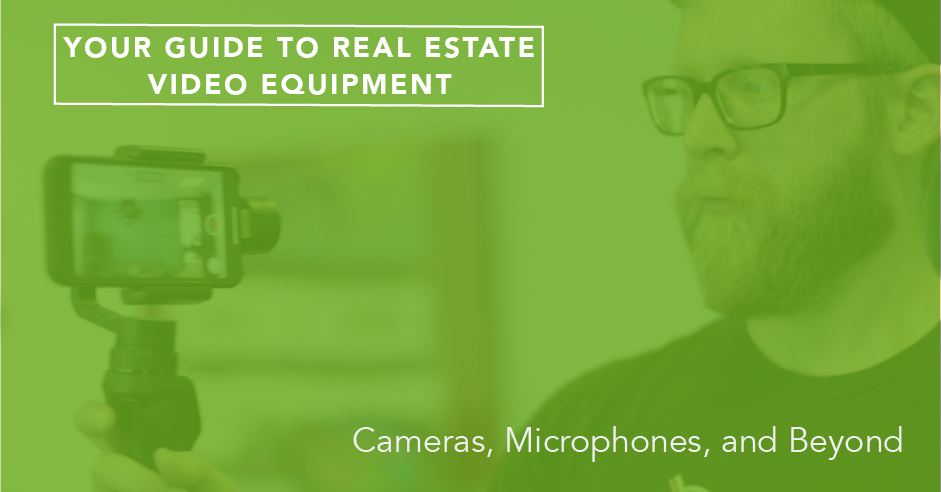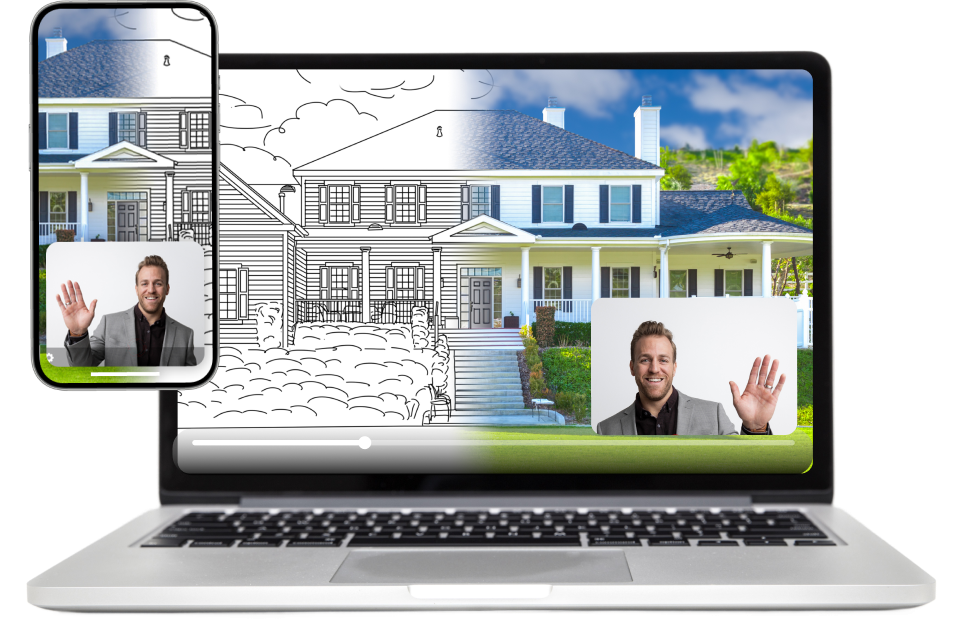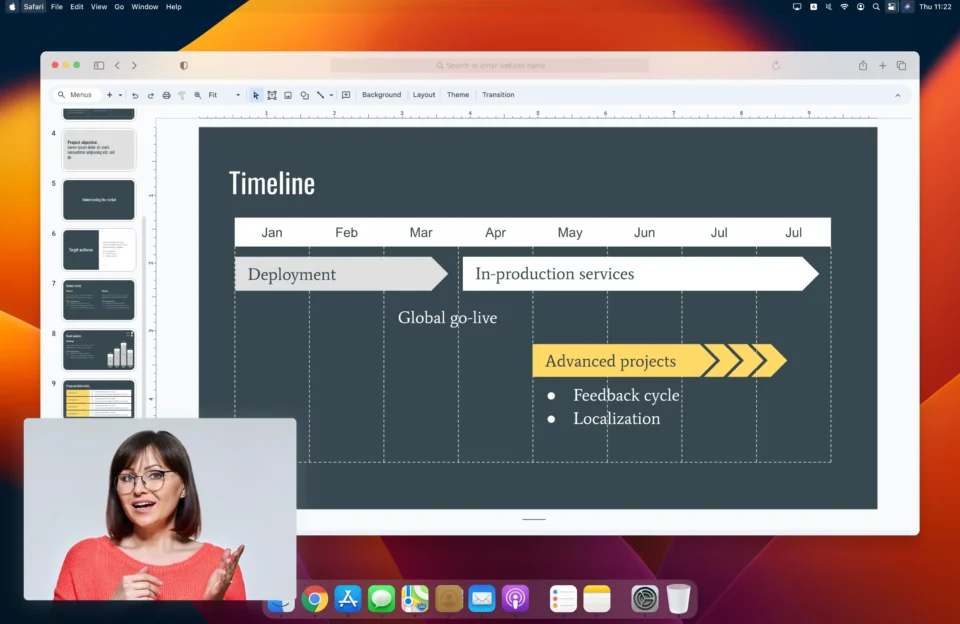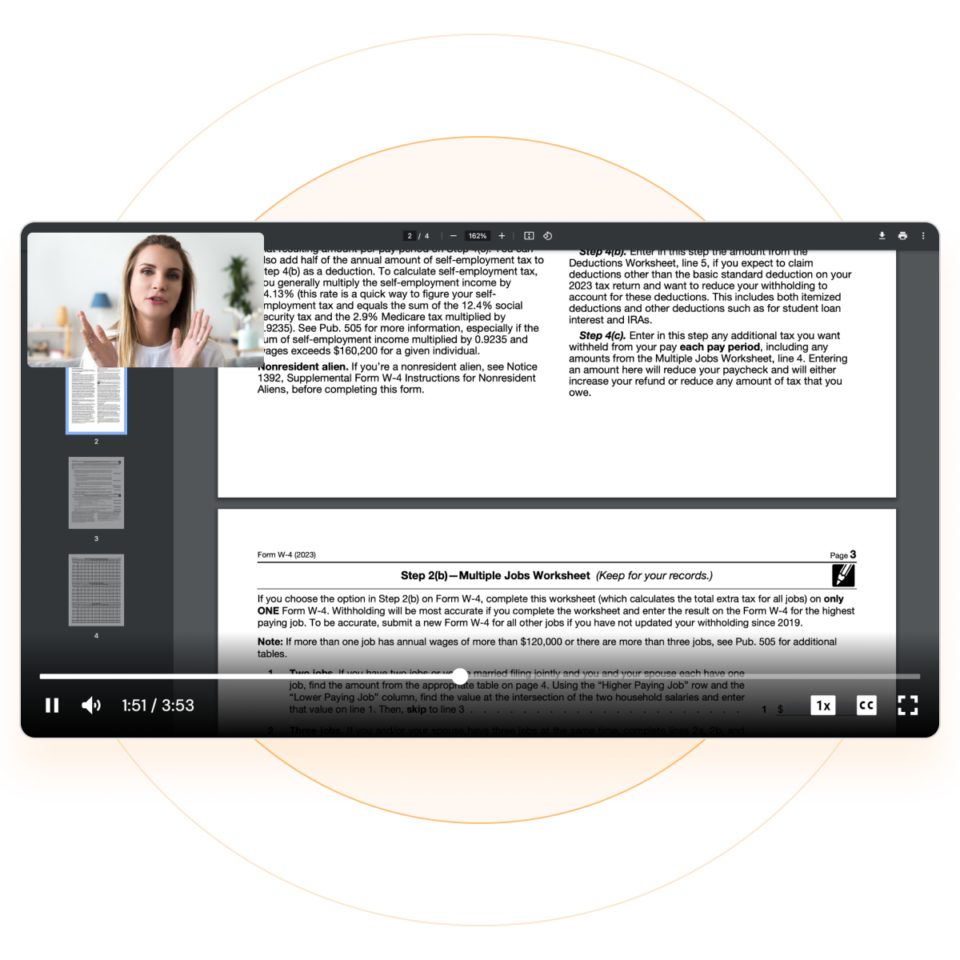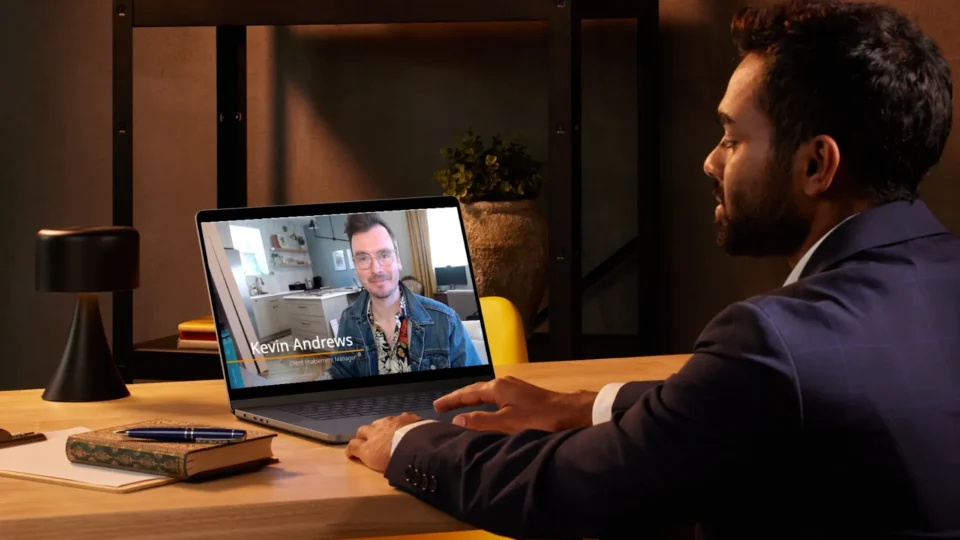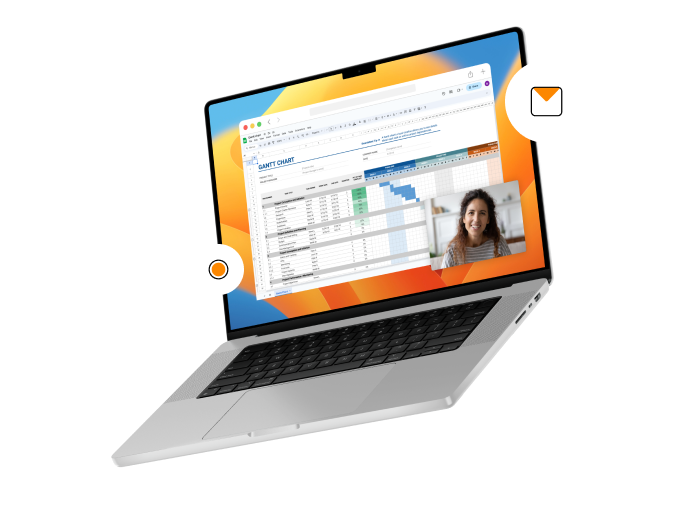
Do you watch real estate video after video online, wishing you could create amazing content of your own? Well, what’s stopping you? If it’s the fact that you don’t have the “latest and greatest” real estate video equipment, don’t let that be an obstacle.
Because you don’t need state-of-the-art real estate video gear to make beautiful listing or community videos. And you definitely don’t need an elaborate set-up for consumer education videos, or one-to-one video emails sent to clients.
There’s so much equipment to choose from now – ranging in complexity and affordability. Keep reading, or watch the video below as we guide you through gear recommendations to record your content – from virtual home tours to market updates and more…
Start with Your Phone
We recommend: A smartphone
There’s a misconception that you need a DSLR camera if you’re serious about incorporating video in your real estate business. But really the best piece of real estate video equipment is one you probably already have… a smartphone.
Nowadays, Android, Apple, Google, and other smartphones are built with amazing optics – making it easier than ever to create incredible videos in an instant.
For example, the iPhone 11 camera includes a wide-angle lens. This feature allows you to capture the entire room in one shot. So, when you’re recording a video walkthrough for a real estate listing, your viewers are able to see the whole space at once.
Want to learn how to make a real estate video with the iPhone 11 wide-angle lens? Check out the feature in-depth in the video below…
Avoid Shaky Videos with a Stabilizer
It can be distracting if your video shakes too much. Luckily, there’s wonderful (and inexpensive) real estate video equipment available to help. Stabilizers, like selfies sticks and gimbals, will keep your picture steady, even as you walk outdoors for a neighborhood tour video.
Selfie Sticks
We recommend: Fugetek Selfie Stick and Tripod
Selfie sticks are a must if you want to truly learn and master how to shoot real estate video on your phone. You can even use them as a tripod. In fact, they should be part of everyone’s real estate video equipment.
This is because selfie sticks get you a better angle if you’re recording video by yourself. And if you’re using a wide-angle lens, a selfie stick will give you an ultra-wide shot – just like this…
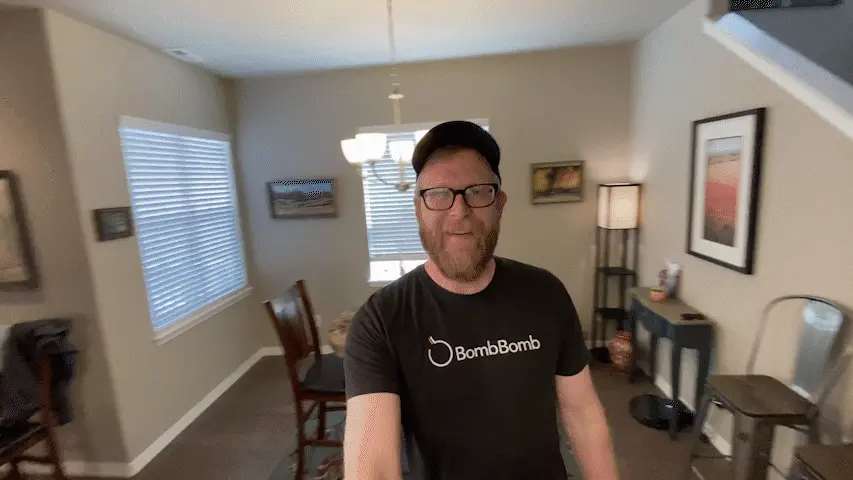
Gimbals
We recommend: DJI Osmo Mobile 3 or DJI Osmo Pocket (for phones) and Ziyhun or DJI Gimbals (for DSLR cameras)
There are so many awesome gimbal options to choose from. But what it really comes down to is what real estate video gear you’ll be using it with.
If you’re recording a real estate video with a gimbal on your phone, DJI will have just what you need.
Working with a phone without the latest optics? The DJI Osmo Pocket is the way to go. It’s fast and easy to use – while still offering that wide-angle perspective that’s great for live home tour videos.
Using a DSLR camera? DJI and Ziyhun have a great DSLR gimbal selection. Their products will get that nice, steady video quality you’re looking for in your official listing videos.
Use Camcorders for a More Lightweight, High-Quality Recording Option
We recommend: Sony Handycam FDR-AX53
Believe it or not, camcorders are not dead. Actually, they are very much alive, and many people are choosing camcorders over DSLRs. They’re making the switch because of the ease of use and the ability to shoot high-quality videos.
Dean Linnell of The Linnell Group (Whistler Real Estate) in British Columbia recently transitioned from using his Canon 80D DSLR camera to recording on a Sony Handycam FDR-AX53 most of the time.
The move to camcorders as a primary source of real estate video equipment stems from its exceptional zoom capabilities, built-in stabilization, and the ability to shoot high-quality 4K footage.
When to Use Mirrorless Cameras and DSLR Cameras
We recommend: Sony or Canon DSLR and Mirrorless Cameras
Now we move on to real estate video equipment that’s a little more advanced – DSLR cameras and mirrorless cameras.
Mirrorless cameras are very similar to DSLR cameras but are simpler in design and tailored to videography (rather than photography). They do not have a mirror reflecting the light from the lens onto the mirror and into the sensor.
This accounts for the smaller camera size and lighter weight, which makes mirrorless cameras perform better on gimbals. That said, mirrorless cameras are a great option for recording if you’re shooting video outside at a local park or hiking trail for your community videos.
While mirrorless cameras don’t have as many features as DSLR cameras do, they are easier to use. And they still have high-quality video capabilities and numerous lens options.
DSLR cameras have been the popular choice for the past decade. And this is attributed to their ability to shoot both high-resolution photography and video.
A DSLR camera offers the whole package, making it one of the best video cameras for real estate. It will allow you to take high-quality photos of your listings and record engaging real estate video content for current and future clients.
However, it’s important to keep in mind that you have to be willing to learn how to shoot real estate video content on a DSLR. You need to put in the time to figure out how they work, or your videos will look worse than they would have on a simpler camera.
Get Awesome Aerial Footage of Listings With Drones
We recommend: DJI Mavic Series
A drone is definitely a more advanced camera. It’s important to note that flying a drone is illegal in many cities without a permit, so make sure you’re in compliance before using it.
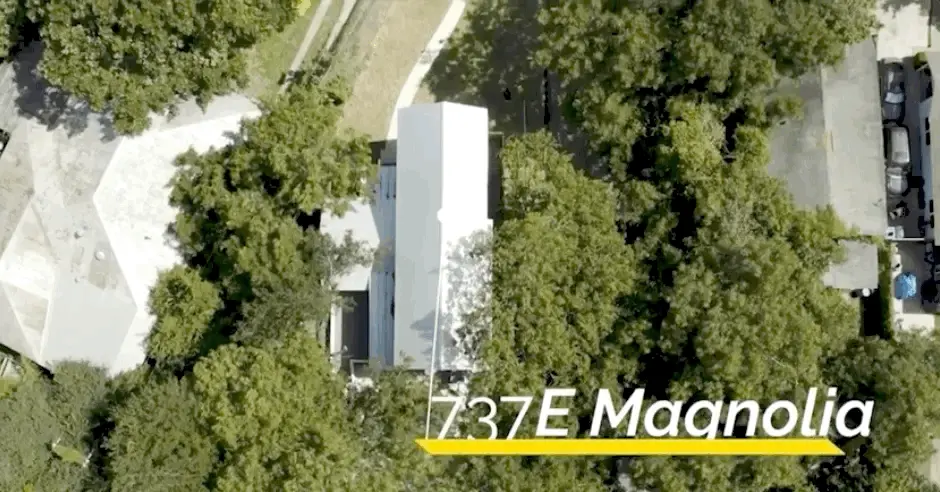
Drones enable you to capture fantastic aerial footage of a property you’re selling that you would otherwise need a helicopter to accomplish. They also allow you to showcase the neighborhood and surrounding area. And for listings (especially high-end properties), that is priceless.
Webcams for Simple Video
We recommend: Logitech C920s
While webcams are probably the simplest among the real estate video equipment in this post, they are probably the most important. And the Logitech C920s has truly become the webcam staple. See our review on it in the following video…
Recording a simple video message on your webcam is powerful because it builds trust with your leads and clients. That’s something a highly-produced video cannot do as well. And if you can’t build that trust, it really doesn’t matter how professional your videos look.
So, if you don’t have a good webcam, invest in one. It will pay off later.
A Good Video Needs Good Audio
We recommend: Rode USB Microphone or Samson Meteor Mic (for computers) and the Rode VideoMicro (for on-the-go recording).
It won’t matter how great your videos look if your viewers can’t hear you. And you won’t be able to build that trust needed to grow your real estate business if current and prospective clients aren’t able to listen to what you’re saying on camera.
When you’re recording your one-to-one video messages from your computer, be sure to use a USB microphone, like the Rode USB Microphone or Samson Meteor Mic. This will make the audio of your video clear, so your message doesn’t get cut off or lost in static.
Recording on the go? There’s a microphone for that, too. The Rode VideoMicro includes a shock mount that makes it easy to connect to any camera – whether it be a DSLR, phone or camcorder.
So, no matter where you’re filming, you’ll have the real estate video equipment you need for your viewers to hear you.
We tested out different types of microphones in the following video…
Want More Real Estate Video Tips? We’ve Got You Covered
You now know all the essential real estate video equipment you need to get started.
But if you’re looking for even more in-depth recommendations, check out our Salesperson’s Guide to Video. This resource will offer gear guidance for various set-ups, so you’ll know just what equipment you need and when to use it.
But most importantly, have fun and be yourself. You’ll be thriving with video before you know it!

